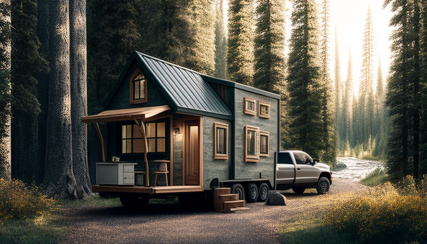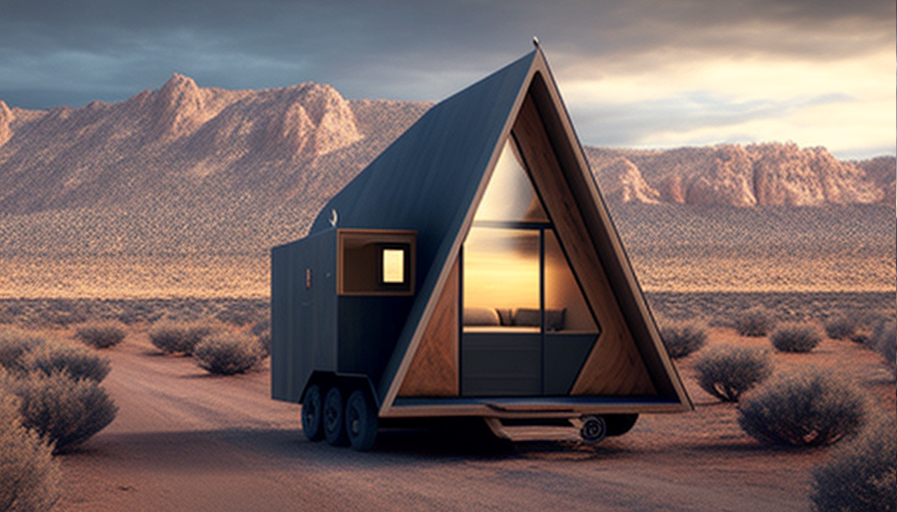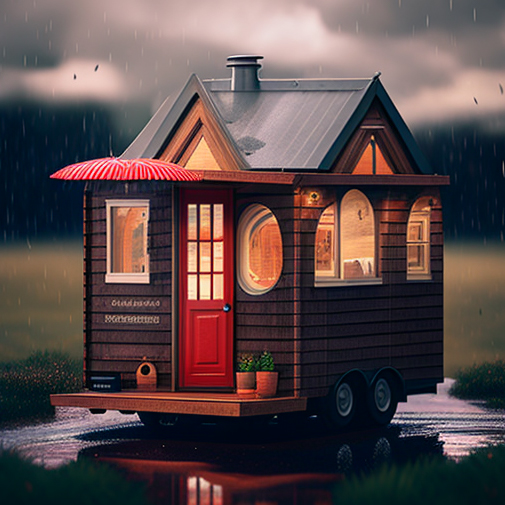Introduction
In recent years, tiny houses have become increasingly popular among those looking for an affordable, minimalist lifestyle. One such option is the tiny house container, which is essentially a shipping container converted into a livable space. These structures are gaining popularity for their unique aesthetic, portability, and affordability.
What is a Tiny House Container?
A tiny house container is a shipping container that has been transformed into a livable space. The size of the container can vary, but the most common size used for tiny house containers is the 20ft and 40ft containers. These containers are designed to be stacked, transported and stored in a small space.
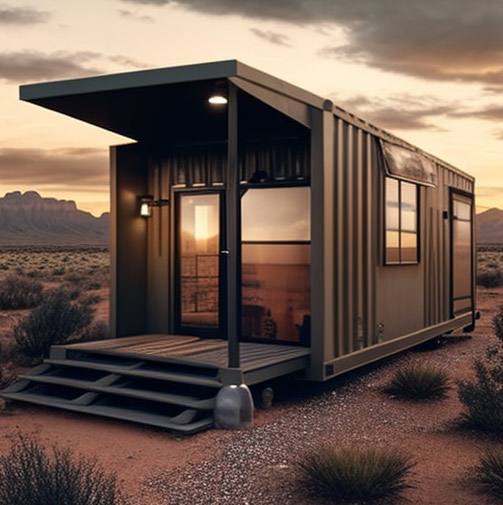
Advantages of Tiny House Containers
Affordability
One of the biggest advantages of tiny house containers is that they are more affordable than traditional homes. The cost of building a tiny house container can range from $10,000 to $100,000, depending on the size, materials used, and level of customization. This makes them an attractive option for those who want to own their own home without taking on a large mortgage.
Portability
Another advantage of tiny house containers is their portability. These structures can be easily transported from one location to another, making them ideal for those who want to travel or move frequently. They can also be stacked, creating a multi-level living space.
Customizable
Tiny house containers are highly customizable, allowing individuals to create a unique living space that suits their needs and style. These containers can be insulated, equipped with electricity, plumbing, and heating and cooling systems. They can also be designed with various types of windows, doors, and interior finishes.
Sustainable
Tiny house containers are an environmentally friendly option as they are made from recycled materials. By repurposing shipping containers, individuals are reducing the amount of waste in landfills. Additionally, these structures can be designed with sustainable features such as solar panels and rainwater collection systems.
Design and Layout of Tiny House Containers
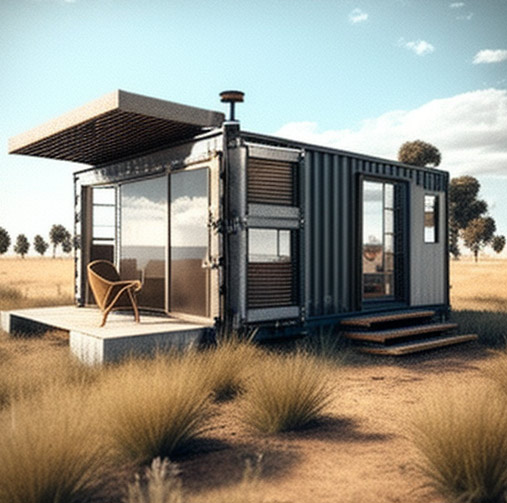
Size
Tiny house containers come in various sizes, but the most common sizes used are the 20ft and 40ft containers. The 20ft container can accommodate a single person or a couple, while the 40ft container can accommodate a family of four.
Materials Used
Tiny house containers are made from steel, making them durable and long-lasting. The interior of the container can be insulated with various materials such as spray foam, fiberglass, or foam board. The exterior can also be customized with different finishes such as wood, metal, or vinyl siding.
Interior Layout
The interior of a tiny house container can be designed in a variety of ways to maximize the use of the limited space. Popular layouts include a studio style with an open floor plan or a more traditional layout with separate rooms. The design can also include loft space to maximize vertical space and provide additional living space.
Cost of Building a Tiny House Container
Factors Affecting Cost
The cost of building a tiny house container can vary widely depending on the size, materials used, and level of customization. Factors such as plumbing, electricity, and heating and cooling systems can also affect the overall cost.
Comparison with Traditional Homes
Despite the lower cost of building a tiny house container, the long-term cost of ownership may still be higher than that of a traditional home. The smaller living space may require more frequent repairs and renovations, and the lack of a permanent foundation may limit financing options.
Maintenance of Tiny House Containers
Cleaning and Maintenance Tips
Maintaining a tiny house container involves regular cleaning and upkeep to prevent damage from moisture and pests. Cleaning the interior with a mild detergent and inspecting for leaks and cracks can help prevent costly repairs.
Repairs and Renovations
When repairs or renovations are necessary, the small size of a tiny house container can make them more manageable and affordable. However, it may be difficult to find contractors experienced in working with shipping containers.
Challenges of Living in a Tiny House Container
Limited Space
The limited living space in a tiny house container can be challenging for some individuals. Storage space is often limited, and the lack of privacy can be a concern.
Zoning and Building Codes
Zoning and building codes may also pose a challenge for those interested in living in a tiny house container. These structures may not be allowed in certain areas or may require special permits and inspections.
Privacy and Noise
Living in a tiny house container may also be challenging due to the lack of sound insulation and privacy. Noise from neighboring containers or outside sources can be disruptive, and the small living space can make it difficult to find quiet time.
Who is a Tiny House Container Suitable For?
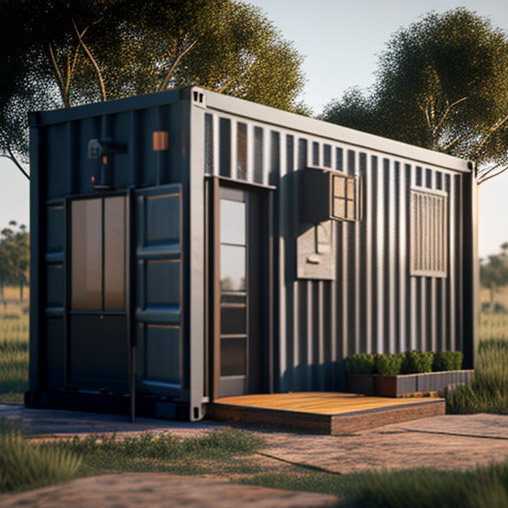
Minimalists
Tiny house containers are an excellent option for those who embrace a minimalist lifestyle and are looking for a smaller, more affordable living space.
Travelers
For those who enjoy traveling or want to have the option to move frequently, a tiny house container offers a portable living space that can be easily transported to different locations.
Young Adults and Students
Young adults and students who are just starting out may find a tiny house container to be an affordable and practical living option.
Elderly and Retirees
Elderly individuals and retirees who are downsizing may also find a tiny house container to be a suitable option for their lifestyle.
Conclusion
Tiny house containers offer a unique and affordable living option for those looking to downsize, travel, or embrace a minimalist lifestyle. While they may come with their own set of challenges, the benefits of affordability, portability, and sustainability make them an attractive option for many.
FAQ’s
- How much does it cost to build a tiny house container? The cost of building a tiny house container can vary widely depending on the size, materials used, and level of customization. Generally, it can cost anywhere from $10,000 to $50,000 or more to build a tiny house container.
- Can I finance a tiny house container? Financing options for tiny house containers can be limited, as they are not considered traditional homes and may not qualify for standard mortgages. However, some lenders offer personal loans or financing specifically for tiny homes.
- Are tiny house containers allowed in all areas? Zoning and building codes may vary by area, so it is important to check local regulations before purchasing or building a tiny house container. Some areas may require special permits or inspections for these types of structures.
- Can I customize the interior of a tiny house container? Yes, the interior of a tiny house container can be customized to suit individual preferences and needs. Many people opt for an open-concept design with a kitchen, living area, and bathroom, as well as lofted sleeping areas to save on floor space.
- How often do tiny house containers require maintenance? Maintaining a tiny house container involves regular cleaning and upkeep to prevent damage from moisture and pests. It is recommended to inspect the interior and exterior for leaks, cracks, and other signs of wear and tear at least once a year. Repairs and renovations may also be necessary from time to time.
